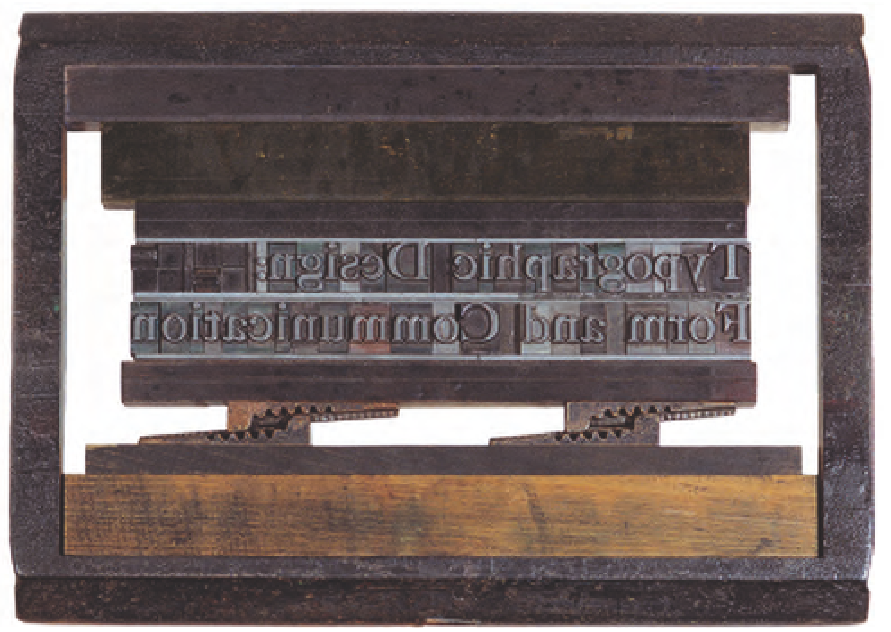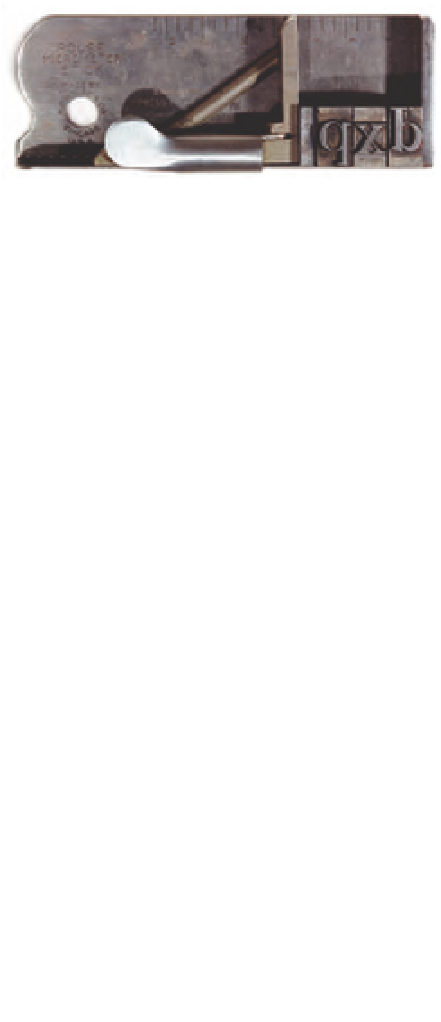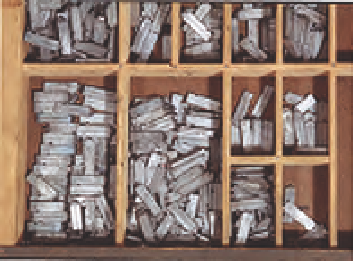Graphics Reference
In-Depth Information
HAND COMPOSITION
1450s to 1880s
7-1
Composing stick.
The traditional method of setting foundry type by hand is similar to the
method used by Gutenberg when he invented movable type in 1450.
For centuries, hand composition was accomplished by assembling
individual pieces of type into lines. A typographer would hold a
composing stick (Fig.
7-1
) in one hand while the other hand placed
type selected from a type case (Fig.
7-2
) into the stick. Type was set
letter by letter, line by line, until the desired setting was achieved.
When it was necessary to justify a line, additional spaces were
created in the line by inserting metal spacing material between words.
Letterspacing was achieved by inserting very thin pieces of copper
or brass between letters until words appeared to be evenly spaced.
When additional space between lines was desired, strips of lead were
inserted between the lines until the type column was the proper depth.
By adding lead, the exact proportion and size of the column could be
formed, assuring readability through consistent spacing.
Once type was set, it was “locked up” in a heavy rectangular steel
frame called a chase (Fig.
7-3
). This was done on a table called a stone.
The type was surrounded by wood or metal spacing material, called
furniture, and the contents of the chase were made secure by tightening
wedgelike steel devices called quoins. After the type was secured in
the chase, it was ready to be transferred to a press for printing, and after
printing, the individual pieces of type were distributed back into the
type case by hand.
Hand composition was tedious and time consuming. When
typesetting became automated as a result of the invention of Linotype
and Monotype machines, hand composition was used only for setting
small amounts of type or for display type. Currently, hand composition
is obsolete as a practical means of setting type, though it has been
revived as an art form. Private presses produce limited-edition
topics and a variety of experimental materials by hand. Many of our
typographic conventions and traditions have their origins in the rich
heritage of handset metal type.
7-2
Type case.
Chase
Wood furniture
Type
Quoins
7-3
A chase containing
type locked up and
ready for printing.









